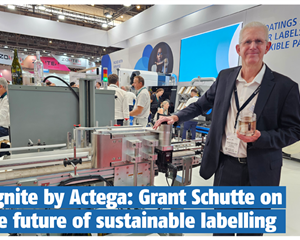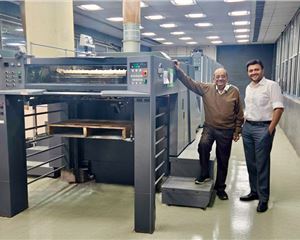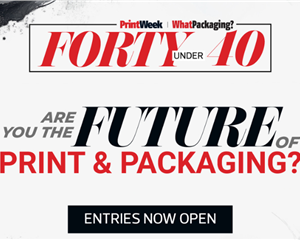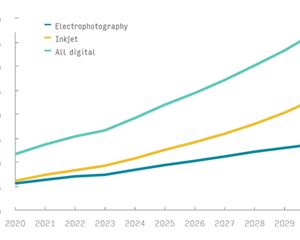"There is no dearth of market," says R K Jain
As flexible packaging giant Uflex would be investing Rs 550 crore (in the first phase) for setting up a liquid packaging plant at Sanand in Gujarat, R K Jain, group president (corporate finance and accounts) of the company explains to Rahul Kumar why, despite its proven track record, the company wants to be cautiously optimistic about the growth prospects.
13 Dec 2015 | By Rahul Kumar
In the recent months, one of the biggest news of the Indian packaging industry has been Noida-based packaging giant Uflex’s Rs 1,800 crore (about USD 284 million) investment to grow its revenue and add new products as demand for packaging material rises in India amid changing retail patterns.
Of the entire investment, Rs 550 crore will be directed towards setting up an aseptic packaging plant in Sanand, an industrial area near Ahmedabad, Gujarat, for packing liquid products. The facility is expected to be operational by April 2017 and will employ 400 people. Meanwhile, the company also plans to increase capex on new technologies and processes at its existing locations, which will mainly result into manufacturing of newer value-added products and also increase the capacity marginally from 425,000 tpa to 450,000 tpa by FY 2017.
“Product-wise, liquid packaging is new for us. We are into all kind of packaging, be it solids, semi-solids, granular material, powder, viscous fluids and all kind of pastes and tubes. Thus, liquid was the only product segment that was missing. With this, we will cover the entire gamut of product offering,” says RK Jain, group president (corporate finance and accounts).
Jain says in the first phase of the plan, the new plant at Sanand will be dedicated to liquid packaging, but there are larger plans as well. “We have acquired enough land at the site. So, if we want to expand further, we do not have to run around looking for land,” Jain says. “Market-wise, we have pan-India presence, and facility-wise, we are largely based in Noida, Jammu and Malanpur. So, at Sanand, we have acquired 72 acres of land to take care of liquid, solids, tubes or any other packaging needs that we may have. We are starting with liquids, but may diversify into any other product range.”
How long will it take to complete the entire expansion plan?
“It’s little difficult to predict. The first phase will be completed by March 2017. It being a new product, we will have to create a market for it. After the plant is commissioned, we shall be able to produce the samples and invite the customers to the plant,” says Jain, adding, “All I can say is that the entire land parcel will be covered in the next three years after 2017.”
Coming to think of it, it is little surprising that a giant like Uflex did not have any liquid packaging facility as yet. Jain explains, “India is a big and versatile market. Packaging concept is growing because social and economic changes, much like consumer behaviour, lifestyles and demographics are changing. The demand for packaging goods is on the rise and a time will come in near future when it will be impossible to sell a product that is not packaged.”
Yet, Jain says, this transformation is happening gradually and hence Uflex’s entry into liquid packaging is equally gradual. He gives the example of Tetra Pak, which is the largest player in liquid packaging globally. “However, our liquid packaging will be different from what Tetra Pak is doing. We have expertise in packaging. We have studied the market. We know that simply replicating a competitive product is nothing but starting a price war, and we do not believe in it,” he says.
According to Jain, a price war is a dying prospect. “We compete in innovation, functionality, superior aesthetics, enhanced barrier properties, and eco-friendliness,” he explains. “Fortunately, today we are the only single supplier doing so. So, we have an edge over the new players. This will help us survive and grow in the market.”
Jain says that the liquid packaging market in India will grow rapidly in future.
Uflex has a major international presence as well. Besides India, it has manufacturing base in Mexico, Dubai, Egypt, Poland and Kentucky catering to global markets spanning the US, Canada, South America, the UK, Europe, Russia, the CIS countries, South Africa and other African countries, Middle East and the South Asian countries, with total employee base of more than 8500 people.
Jain says, “At our international locations, we employ local nationals, giving boost to employment in the geographies that we are present in. Out of the total employee base of more than 8,500, over 1,500 people are at international manufacturing plants.”
Jain says the company can offer packaging solutions for products from half gram quantity to 30-40 kg. While in the past, packaging solutions for smaller quantity products targeting the retail market was the focus, and the company has been a sustained market leader in this segment, it has already started focusing on large quantity packages over the last few years. “We have an advantage. Customers feels comfortable dealing with a company that can assure prompt supplies of large orders. When you talk about solution, it is not just the products, it also includes the machines for handling these products,” he says.
This is one of the reasons, Jain says, most companies find it difficult to work towards innovation. Innovation involves both products and machines, and it is not easy to achieve this combination. “In case of Uflex, we have both in-house. Thus, we are a complete packaging solution company,” he adds.
Coming back to the liquid packaging plant, Jain says it will produce seven billions packs per annum, with the pack size ranging from 90 ml to 1,000 ml.
Talking about the growth prospects after the commissioning of the plant, Jain says the company wants to be cautiously optimistic, as this is going to be a newer product and market. “Although we are bullish and will try to get it in two to three years, we have projected four to five years to achieve this seven billions packs per annum target but we are quite sure that we will be able to accomplish this within the next two to three years.
After all, Jain concedes, growth has to come from the entire packaging range of the company, while growth from individual segments may vary.
Yet, in the context of Uflex’s overall business, what would be the role of liquid packaging?
Liquid packaging will add to the total revenue on full capacity by Rs 1,500 crore with better margins thereon. It will contribute towards two-way growth, both top line and bottom line.
But the company is looking at total growth. Jain explains, “Total growth means the growth of the entire company. We are expecting net profit growth anything between 25-30%, while the top line will continue to grow in double digits. There is no dearth of market. It is endless. You just need to approach and catch it. You have to develop the market. You have to go and approach the customers.”
Talking about growth, the company sees its future in packaging business and nowhere else. “And the packaging is very important,” says Jain. “We are raising the bar of packaging to the second level. To operate at this level, you require a different profile and you have to have different skill sets.”
Jain then explains the secret of a great package. “Make things so good yet simple that people really like it,” he says, adding, “We provide optimum packaging solutions to our customers that meet their needs in all respects.”












 See All
See All